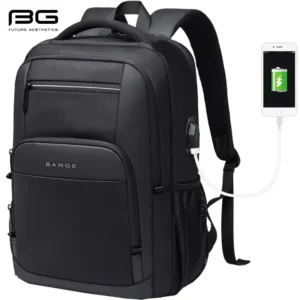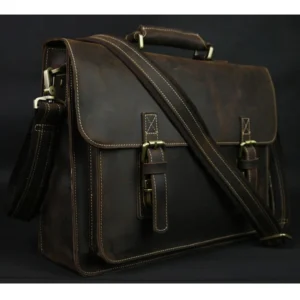Introduction to Leather Backpack Care
A premium leather backpack is more than just an accessory—it’s an investment that deserves proper care and attention. Leather, being a natural material, has unique characteristics that require specific maintenance to preserve its beauty and functionality. Without regular care, even the highest quality leather can dry out, crack, and deteriorate prematurely.
Proper leather care directly impacts how your backpack ages over time. Well-maintained leather develops a beautiful patina—that sought-after character and sheen that only comes with age and proper treatment. Meanwhile, neglected leather often becomes stiff, discolored, and prone to damage from environmental factors like sun exposure, moisture, and temperature fluctuations.
At Summit Carry, we craft our luxury leather backpacks to last for decades rather than seasons. However, even the finest leather backpacks require ongoing maintenance to reach their full potential and lifespan.
This guide aims to provide comprehensive care instructions for all leather types, ensuring your backpack remains beautiful and functional for years to come. Whether you’ve just purchased your first leather backpack or are looking to improve the care routine for your existing collection, understanding proper maintenance techniques for commuters and everyday users will significantly extend your backpack’s life.
Key Takeaways:
* Regular leather care can extend your backpack’s life by years or even decades
* Different leather types require specific maintenance approaches
* Even minimal care routines make a substantial difference in leather longevity
* Environmental factors significantly affect leather condition and appearance
Understanding Different Leather Types and Their Care Requirements
Full-Grain Leather: Premium Care for Maximum Longevity
Full-grain leather represents the highest quality leather available, prized for its durability and natural character. This premium material retains the entire grain surface of the hide, complete with natural markings that tell the story of the animal’s life. These distinctive characteristics aren’t flaws—they’re the hallmarks of authentic, high-quality leather.
Our full-grain leather backpacks showcase these natural features while offering exceptional durability. With proper care, full-grain leather develops a rich patina over time, becoming more beautiful with age rather than deteriorating.
Key characteristics of full-grain leather:
* Visible natural markings and pore patterns
* Exceptional durability and longevity
* Develops a rich, unique patina with use
* Absorbs conditioners deeply for optimal nourishment
When caring for full-grain leather, focus on gentle cleaning followed by thorough conditioning techniques to maintain the leather’s natural moisture balance. This leather type responds exceptionally well to proper conditioning, which helps it develop that coveted patina while remaining supple and strong.
Top-Grain Leather: Balancing Protection and Natural Character
Top-grain leather offers an excellent balance between durability and refined appearance. This leather type has been lightly sanded to remove surface imperfections and often includes a protective coating that creates a more uniform appearance while offering some resistance to staining.
While slightly less durable than full-grain, top-grain leather still offers excellent longevity with proper care. The protective coating affects how this leather should be cleaned and conditioned, requiring products that can penetrate this layer to nourish the leather beneath.
Key characteristics of top-grain leather:
* Smoother, more uniform surface than full-grain
* Protective coating that resists some stains
* Less visible natural markings
* May require specialized conditioners to penetrate the protective finish
Understanding the differences between full-grain and top-grain leather helps determine the right care approach. Top-grain leather typically requires less frequent conditioning than full-grain but benefits from regular surface cleaning to maintain its protective coating.
Genuine Leather: Understanding Quality Variations and Basic Care
Despite its name suggesting authenticity, “genuine leather” actually refers to a wide quality spectrum of products made from the lower layers of the hide. This term often indicates leather that has been heavily processed, with quality ranging from decent to poor depending on the specific manufacturing techniques.
Genuine leather backpacks typically feature more extensive finishing treatments like embossing, heavy dyeing, or synthetic coatings. These treatments create a more uniform appearance but can mask lower-quality materials underneath.
Key characteristics of genuine leather:
* Often has a uniform, consistent appearance
* May have an artificial grain pattern embossed onto the surface
* Typically less breathable than higher-grade leathers
* Generally less durable but still benefits from basic care
The care approach for genuine leather focuses on maintaining the protective finish rather than developing a natural patina. Regular cleaning with gentle products helps extend its lifespan, though these backpacks typically won’t develop the rich character associated with higher-quality leathers.
Suede and Nubuck: Special Care for Delicate Textures
Suede and nubuck represent distinctive leather variants with velvety textures that require specialized care approaches. Suede is created from the underside of the hide, while nubuck is top-grain leather that’s been lightly sanded to create a similar soft texture.
Both materials feature a raised nap (the fuzzy texture) that easily traps dirt and can be permanently damaged by water or oil. Their delicate nature demands different cleaning and protection strategies than smooth leathers.
Key characteristics of suede and nubuck:
* Soft, velvety texture with raised nap
* Highly susceptible to water and oil staining
* Cannot be cleaned with standard leather cleaners
* Requires specialized brushes and protectants
Caring for these materials involves regular brushing to maintain the nap, immediate attention to stains, and application of specialized protectants designed specifically for suede and nubuck. Unlike smooth leathers, these materials should never be conditioned with oil or wax-based products, as these will permanently mat the nap.
Essential Leather Care Toolkit
Must-Have Cleaning Supplies
Assembling the right cleaning tools is your first step toward effective leather care. Quality supplies make a significant difference in both the process and results of leather maintenance.
Essential cleaning tools include:
- Microfiber cloths: Superior to regular cloths for gentle cleaning without scratching; the fine fibers effectively trap dust and dirt particles
- Soft-bristle brushes: Horsehair brushes are ideal for most leather types, while synthetic brushes work well for initial dust removal
- pH-neutral leather cleaner: Specifically formulated for leather to clean without stripping natural oils
- Clean sponges: For controlled application of cleaning products
- Leather soap (saddle soap): Traditional option for deeper cleaning when needed
For travelers and on-the-go maintenance, consider creating a DIY leather care kit for travel backpacks that includes travel-sized versions of these essentials. This allows for quick cleaning while away from home.
Avoid common household cleaners like dish soap, all-purpose cleaners, or alcohol-based products, as these can strip natural oils and damage leather fibers. Additionally, never use paper towels, which can leave lint and potentially scratch the leather surface.
Quality Conditioning and Protection Products
After cleaning, proper conditioning restores moisture and maintains leather’s suppleness. The right products make all the difference in preserving your backpack’s appearance and structural integrity.
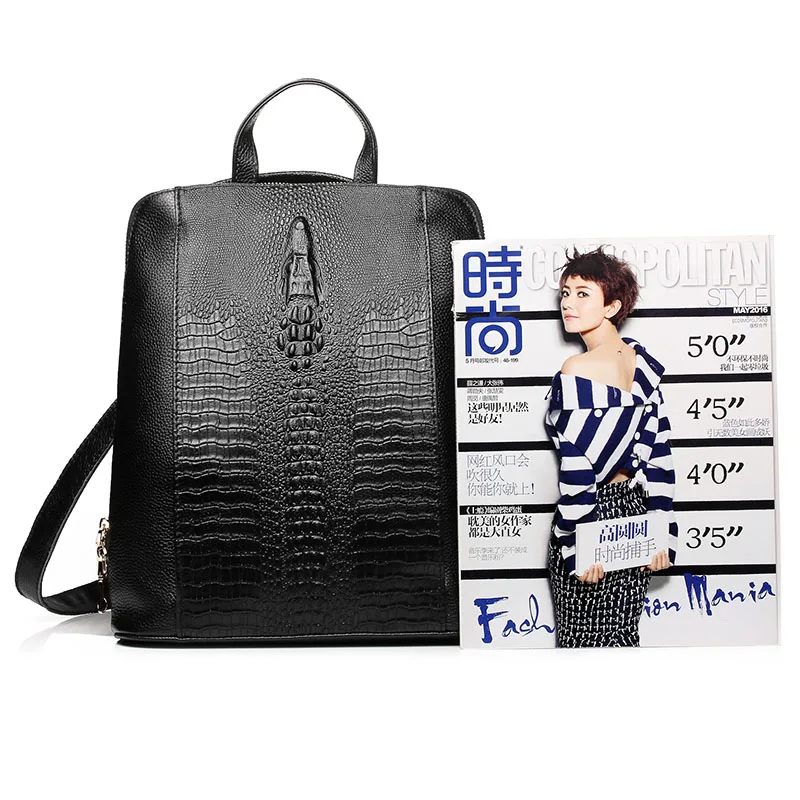
Essential conditioning and protection products:
- Leather conditioner: Look for natural ingredients like beeswax, lanolin, or neatsfoot oil
- Leather cream: Provides conditioning with minimal darkening effect
- Leather balm: Offers deeper conditioning for dry or neglected leather
- Water and stain repellent: Creates invisible barrier against moisture and stains
- Leather protectant: Provides UV protection and weather resistance
The ongoing debate about whether oiling leather waterproofs it is important to understand. While conditioning products add some water resistance by maintaining the leather’s natural oils, dedicated leather waterproofing products provide significantly more protection against moisture damage.
When selecting products, consider your specific leather type. Full-grain leather benefits from deeper conditioning products, while finished leathers may require specialized formulations that can penetrate their protective coatings. Natural products generally provide better results than those containing silicones or petroleum derivatives, which can build up and damage leather over time.
Specialized Tools for Problem-Solving
Beyond basic cleaning and conditioning supplies, certain specialized tools help address specific leather issues effectively.
Problem-solving tools include:
- Suede brush: Features brass or rubber bristles specifically designed for restoring suede’s nap
- Suede eraser: Removes stubborn stains from suede and nubuck surfaces
- Leather edge sealer: Prevents fraying and damage to cut leather edges
- Cotton swabs: Perfect for detailed cleaning in seams and small crevices
- Leather repair kit: Includes matching colors and fillers for addressing scratches and scuffs
- Fine-grit sandpaper (1000+ grit): For very gentle surface preparation before repair
These specialized tools become invaluable when addressing specific problems. For example, a suede eraser can often remove stains that no cleaner can touch, while edge sealer extends the life of your backpack by preventing unraveling at stress points.
Daily and Weekly Maintenance Routines
Quick Daily Care Habits to Extend Leather Life
Establishing simple daily habits significantly extends your leather backpack’s lifespan without requiring much time or effort. These small actions prevent the accumulation of issues that can become harder to address later.
Wipe down after each use: Use a dry, clean microfiber cloth to remove surface dust and oils transferred from hands. Focus on handles and frequently touched areas.
Empty completely each night: Removing all contents reduces stress on seams and prevents potential damage from items inside.
Properly place when not in use: Store your backpack upright or hanging rather than tossed on the floor or squashed under other items.
Handle with clean hands: Avoid transferring oils, dirt, or food residue to your leather.
Address spills immediately: Blot (never rub) any liquid spills as soon as they happen to prevent staining and water damage.
Understanding whether leather should dry before conditioning is crucial—always allow your backpack to dry completely at room temperature away from heat sources before applying any conditioners or treatments.
These quick daily habits typically take less than two minutes but make an enormous difference in maintaining your backpack’s appearance and preventing premature wear.
Weekly Inspection and Light Cleaning Protocol
Set aside 10-15 minutes weekly for a more thorough inspection and light cleaning of your leather backpack. This routine helps identify potential issues before they worsen and maintains the leather’s appearance between deep cleanings.
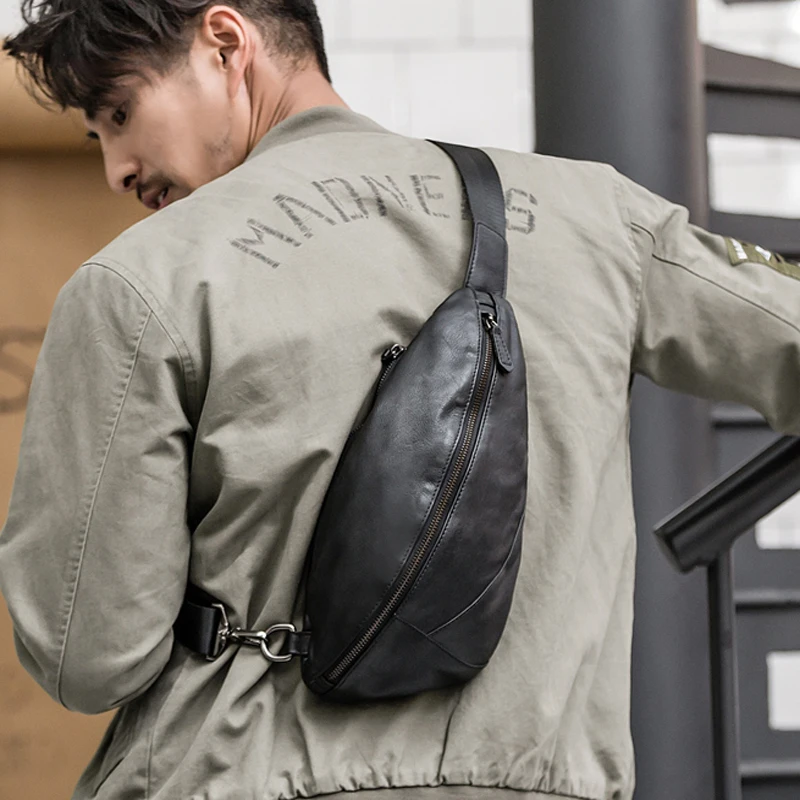
Weekly maintenance steps:
Visual inspection: Check all seams, edges, hardware, and stress points for early signs of wear, cracking, or damage.
Dust removal: Use a soft brush to remove dust from all surfaces, paying special attention to seams and crevices.
Light cleaning: Gently wipe the entire surface with a slightly damp microfiber cloth, then immediately dry with a clean cloth.
Hardware check: Clean and check all zippers, buckles, and metal components for proper function.
Assessment for deeper care: Determine if conditioning or more thorough cleaning is needed based on the leather’s appearance and feel.
The frequency of this routine should increase if your backpack experiences heavy use or exposure to harsh conditions. For example, daily commuters in urban environments should consider twice-weekly inspections, while occasional users might maintain a bi-weekly schedule.
Interior Care and Organization
While exterior leather care often gets the most attention, proper interior maintenance is equally important for your backpack’s longevity and functionality. Different interior materials require specific care approaches.
Interior care guidelines:
- Fabric linings: Vacuum with a small attachment or use a lint roller to remove debris; spot clean stains with minimal moisture
- Leather interiors: Wipe with a slightly damp cloth and allow to dry completely before closing
- Organization systems: Clean pen slots, pockets, and dividers regularly to prevent ink stains and debris buildup
- Electronics compartments: Pay special attention to cleaning dedicated laptop or tablet sleeves to prevent abrasive dust buildup
Proper organization also prevents damage. Distribute weight evenly in your men’s leather backpack to prevent stretching or distortion. Use protective sleeves for sharp items, and avoid overstuffing, which strains seams and can distort the backpack’s shape over time.
To eliminate odors, air out the interior regularly and consider placing odor absorbers like cedar chips, activated charcoal, or baking soda sachets inside when storing for longer periods.
Deep Cleaning Your Leather Backpack
Preparation and Safety Measures
Before beginning any deep cleaning process, proper preparation ensures the best results while minimizing risks to your leather backpack.
Preparation steps:
Empty completely: Remove all items, turning pockets inside out to eliminate all debris.
Test cleaning products: Always perform a patch test on an inconspicuous area (like the bottom or inside a flap) to ensure the cleaner won’t discolor or damage the leather.
Protect hardware: Use painter’s tape to cover metal hardware that might be damaged by cleaning products.
Work in a well-ventilated area: Ensure proper air circulation when using any leather cleaning products.
Prepare your work surface: Lay out clean towels or paper to protect both your work area and the backpack.
Safety precautions include keeping all leather products away from direct heat sources and being particularly careful with any alcohol-based products, which can dry out leather if used improperly. Never soak leather or apply excessive moisture, as this can cause warping and permanent damage.
Step-by-Step Deep Cleaning Process
Deep cleaning should be performed only when necessary—typically every few months for regularly used backpacks or when visible soiling occurs. The process varies slightly depending on leather type.
For smooth leather types (full-grain, top-grain, genuine):
Remove surface dust: Use a soft brush or dry microfiber cloth to remove loose dirt and dust.
Apply leather cleaner: Using a damp sponge or cloth, work a small amount of leather cleaner into a light lather. Work in small sections using gentle circular motions.
Clean thoroughly but gently: Pay special attention to heavily soiled areas, but avoid excessive scrubbing which can damage the leather surface.
Address seams and edges: Use a slightly damp cotton swab to clean hard-to-reach areas and seams where dirt accumulates.
Remove cleaner residue: Wipe away all soap residue with a clean, damp cloth, changing the rinse water frequently.
Vintage leather backpacks require especially gentle cleaning to preserve their aged character and patina. Focus on removing dirt without stripping away the unique coloration that gives these pieces their charm.
For suede and nubuck:
Brush the surface: Use a suede brush to gently lift embedded dirt and restore the nap.
Address stains: Use a suede eraser on any visible stains with gentle rubbing motions.
Apply specialized cleaner: Only use cleaners specifically formulated for suede or nubuck, following the product’s directions precisely.
Brush again: After cleaning, brush the surface again to restore the nap and even out the appearance.
Throughout the cleaning process, avoid saturating the leather. The goal is to clean the surface without excessive moisture penetration, which can damage the leather structure and internal components.
Drying and Post-Cleaning Care
Proper drying is crucial after cleaning to prevent mold, mildew, and structural damage to your leather backpack.
Drying guidelines:
Air dry naturally: Allow your backpack to dry at room temperature away from direct heat sources like radiators, hair dryers, or direct sunlight.
Maintain shape while drying: Stuff the backpack loosely with clean white paper (not newspaper, which can transfer ink) or white towels to maintain its shape while drying.
Allow complete drying: Ensure the backpack is completely dry before applying any conditioner or using it again—typically 24-48 hours depending on humidity levels.
Restore structure: Once dry, gently manipulate the leather back to its proper shape if any minor distortion has occurred.
After cleaning, assess the leather’s condition to determine if conditioning is needed. Signs that conditioning should follow cleaning include leather that feels stiff, looks dull, or shows slight cracking at flex points.
Conditioning: Restoring and Preserving Leather Quality
Understanding Leather Conditioning Fundamentals
Leather conditioning is essential for maintaining your backpack’s suppleness, strength, and resistance to environmental damage. At the microscopic level, conditioning replenishes the natural oils in leather fibers that are gradually lost through exposure to air, handling, and cleaning.
Signs your leather needs conditioning:
- Feels dry or stiff to the touch
- Appears dull or has lost its luster
- Makes a crackling sound when flexed
- Shows fine lines or early cracking, especially at fold points
- Has faded or lightened in color
- Feels rough rather than smooth
Conditioning frequency depends heavily on usage patterns, climate conditions, and leather type. Backpacks used daily in dry climates may need conditioning every 1-3 months, while those in humid environments or used occasionally might only need it every 6 months.
A common misconception is that more conditioning is always better. Over-conditioning can saturate the leather, causing it to become limp and potentially trapping dirt. The goal of leather conditioning and waterproofing is balance—providing enough moisture to keep the leather supple without oversaturating it.
Conditioning Techniques for Different Leather Types
Each leather type requires specific conditioning approaches to achieve optimal results without causing damage. Always start with a clean, dry backpack before conditioning.
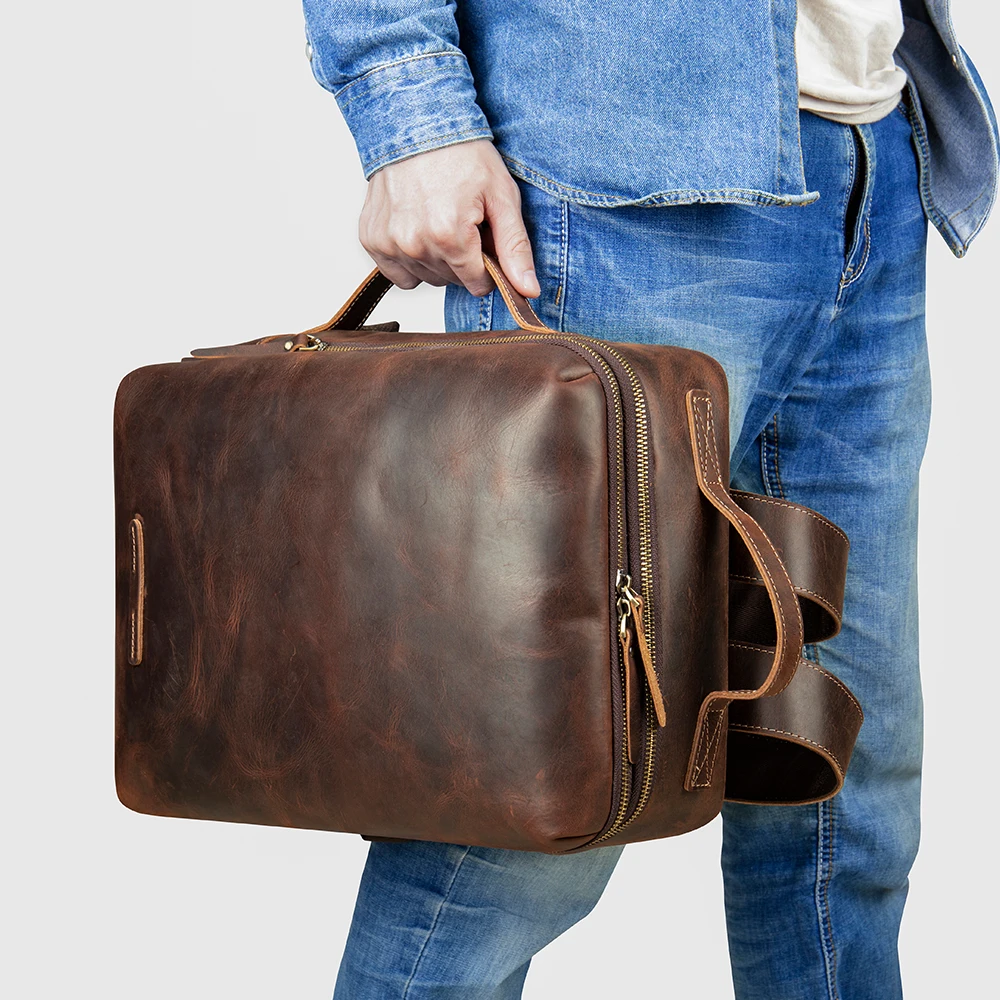
For full-grain leather:
Apply conditioner sparingly: Using a clean cloth, apply a small amount of conditioner in circular motions.
Work in sections: Cover the entire surface gradually, giving special attention to areas that flex frequently.
Allow absorption: Let the conditioner penetrate for 15-30 minutes (follow product instructions).
Buff excess: Remove any unabsorbed conditioner with a clean cloth using gentle circular motions.
Second application (if needed): Extremely dry leather may benefit from a second light application focused on areas that still appear dry.
For top-grain and finished leathers:
Choose appropriate conditioner: Select products specifically formulated for finished leathers that can penetrate the protective coating.
Apply thinly: Use very light applications as these leathers typically absorb less conditioner than unfinished varieties.
Focus on flex points: Pay special attention to areas that bend and flex regularly, such as around straps and closures.
Buff thoroughly: Remove all excess product to prevent buildup on the surface coating.
Men’s leather travel backpacks often feature combination materials and benefit from careful conditioning that respects these different elements. Apply conditioners precisely to avoid contact with non-leather components.
For genuine leather:
Use light conditioning products: Choose lighter formulations like leather creams rather than heavy oils or waxes.
Apply minimally: Use very small amounts as heavily processed leather absorbs less conditioner.
Focus on maintaining the finish: The goal is preserving the protective coating rather than deeply conditioning.
For suede and nubuck:
These leathers should never receive traditional oil or wax conditioners. Instead, use only specialized products specifically labeled for suede/nubuck that maintain the texture without matting the nap.
Assessing Results and Corrective Actions
After conditioning, properly evaluate the results to ensure your leather backpack has received appropriate treatment and make corrections if necessary.
Signs of proper conditioning:
- Leather feels soft and supple but not sticky or greasy
- Surface has a subtle, natural sheen rather than a wet or shiny appearance
- Color has deepened slightly and appears more even
- Flexibility has improved, especially at stress points
- No residue remains on the surface
If you’ve over-conditioned your backpack (indicated by a greasy feel or darkened appearance), gently buff with a dry microfiber cloth to remove excess product. For severe over-conditioning, a very light application of leather cleaner followed by thorough buffing can help.
For under-conditioned areas that still appear dry after the initial application has fully absorbed (usually 24-48 hours), apply a small additional amount only to those specific areas, following the same application technique.
14 Inch Leather Laptop Backpack, Brown Leather Backpack, Men's Leather Backpack, Vintage Leather Backpack
Price range: $177.28 through $199.12 Select options This product has multiple variants. The options may be chosen on the product pageCarry On Leather Backpack, Roll Top Leather Backpack
Price range: $77.76 through $96.48 Select options This product has multiple variants. The options may be chosen on the product pageDesigner Men's Backpack, Men's Leather Laptop Backpack, Men's Leather Work Backpack
Price range: $158.04 through $160.04 Select options This product has multiple variants. The options may be chosen on the product pageDesigner Mini Backpack, Mini Leather Backpack, Small Leather Sling Backpack, Women's Leather Backpack
Price range: $95.76 through $98.80 Select options This product has multiple variants. The options may be chosen on the product pageDesigner Mini Backpack, Designer Women's Backpack, Mini Leather Backpack, Women's Leather Backpack
Price range: $135.92 through $137.64 Select options This product has multiple variants. The options may be chosen on the product page15 Inch Leather Laptop Backpack, Leather Briefcase Backpack
$332.96 Select options This product has multiple variants. The options may be chosen on the product page
Allow your backpack to rest for at least 24 hours after conditioning before heavy use. This gives the leather time to fully absorb the conditioner and regain its optimal structure.
Protecting Your Leather Backpack from Environmental Damage
Weather Protection Strategies
Environmental factors pose significant challenges to leather backpacks, but proper protective measures can minimize damage and extend your backpack’s life. Different weather conditions require specific approaches.
Rain and moisture protection:
- Apply dedicated waterproofing treatments for leather bags every 1-3 months depending on exposure
- Use rain covers during heavy downpours
- Immediately blot (don’t rub) any moisture with absorbent cloths
- Allow slow, natural drying away from heat if your backpack gets wet
Sun and heat protection:
- Store backpacks away from direct sunlight when not in use
- Apply leather protectants with UV inhibitors to prevent fading and drying
- Avoid leaving your backpack in hot cars or near heating vents
- Use conditioners more frequently if regularly exposed to sunlight
Cold weather considerations:
- Condition more frequently during winter months when indoor heating reduces humidity
- Allow leather to gradually warm to room temperature if it’s been in cold conditions
- Be especially careful with leather that has become cold, as it’s more prone to cracking when flexed
Understanding the essential features of waterproof leather backpacks can help you select products with built-in weather resistance. However, even backpacks with excellent natural water resistance benefit from additional protection.
Most protective treatments last between 3-8 weeks depending on exposure and wear. Regular reapplication before protection diminishes provides continuous defense against environmental damage.
Smart Storage Solutions
Proper storage is crucial for maintaining your leather backpack’s appearance and structural integrity during periods of non-use.
Ideal storage conditions:
- Temperature: 60-80°F (15-27°C)
- Humidity: 40-60% relative humidity
- Light: Limited exposure to light, especially direct sunlight
- Air circulation: Moderate airflow to prevent mold and mildew
Storage techniques:
- Maintain shape: Stuff your women’s leather backpack loosely with acid-free tissue paper or clean cotton fabric
- Use dust bags: Store in breathable cotton dust bags rather than plastic, which can trap moisture
- Position properly: Store upright or hanging rather than folded or with items stacked on top
- Regular air-out: Remove from storage every 2-3 months to air out and prevent musty odors
- Avoid plastic: Never store leather in sealed plastic bags or containers
For long-term storage (over 3 months), condition your backpack before storing, then place silica gel packets inside to absorb excess moisture. Check periodically and refresh the stuffing to maintain shape and prevent creasing.
Preventing Wear in High-Stress Areas
Leather backpacks develop wear patterns in predictable areas that receive the most stress and friction. Proactive attention to these areas can significantly extend your backpack’s usable life.
Common high-stress areas:
- Bottom corners and edges
- Handle attachment points
- Shoulder strap connections
- Zipper paths and pull areas
- Closure flaps and magnetic snap points
Preventative measures:
- Apply extra conditioner to flexing points during regular maintenance
- Use edge sealers on exposed leather edges to prevent fraying
- Reinforce interior stress points with backing material if showing early wear
- Rotate carrying methods to distribute wear more evenly
- Avoid overloading, which puts excessive strain on seams and attachment points
Proper backpack weight distribution techniques significantly reduce strain on any single area. Place heavier items close to your back and centered in the pack rather than in front pockets or at the bottom.
For backpacks with dedicated device compartments, always use these as intended rather than placing heavy electronics in general compartments where they may strain seams not designed for such weight.
Troubleshooting Common Leather Backpack Problems
Water and Liquid Damage Solutions
Water damage is among the most common problems leather backpack owners face. Quick and appropriate response can minimize lasting damage.
Immediate water exposure response:
Blot immediately: Use absorbent cloths to blot (never rub) excess moisture.
Shape restoration: Gently reshape the backpack if it has begun to warp.
Natural drying: Allow to dry naturally at room temperature away from direct heat sources.
Conditioning after drying: Once completely dry (24-48 hours), apply leather conditioner to restore moisture balance.
For specific liquid stains:
- Coffee/tea: Blot immediately, then clean with diluted leather cleaner and condition after drying.
- Alcohol: Blot quickly, apply leather cleaner, then restore moisture with conditioner.
- Oil/grease: Absorb excess with cornstarch or talcum powder, leave overnight, then brush away and clean.
- Ink: Treat immediately with specialized leather ink remover; older ink stains may require professional help.
For extensive water damage or mold growth, professional restoration is recommended. The ultimate guide to waterproofing leather bags provides additional preventative measures to avoid future water damage.
Removing Stains and Spots
Different stains require specific removal approaches based on their composition. Always test stain removal techniques on an inconspicuous area first.
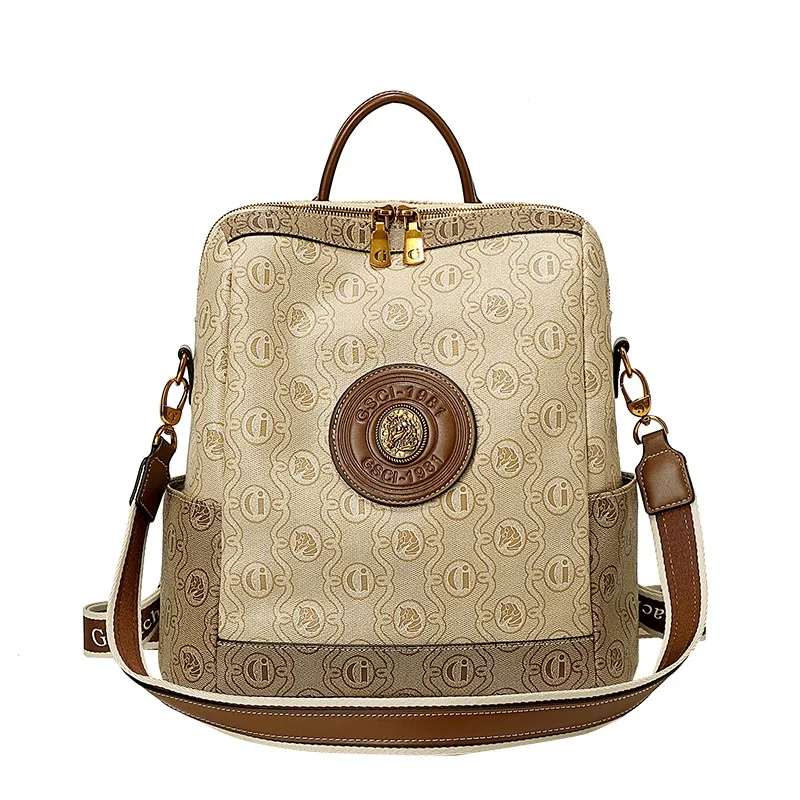
Common stain removal techniques:
| Stain Type | Removal Method |
|---|---|
| Surface dirt | Brush gently, then wipe with damp cloth |
| Food stains | Blot, clean with leather cleaner, condition after drying |
| Oil/grease | Absorb with powder, brush away, then clean gently |
| Ink | Leather ink remover or alcohol (test first); professional help for set stains |
| Salt marks | Wipe with cloth dampened with equal parts water and white vinegar, then condition |
| Mold/mildew | Clean with cloth dampened with equal parts water and isopropyl alcohol, dry thoroughly |
| Blood | Cold water blotting, then leather cleaner; never use hot water |
| Unknown | Start with gentlest methods, progressively moving to stronger solutions |
The timing of stain treatment is crucial—immediate attention often allows complete removal, while delays may result in permanent marking. For stains older than 24 hours or those that don’t respond to initial treatment, consider professional cleaning.
Repairing Scratches, Scuffs, and Wear
Minor damage can often be addressed through DIY repairs, while more significant issues may require professional assistance.
For light scratches and scuffs:
Clean the area: Ensure the damaged area is clean and dry.
Apply conditioner: For minor scratches, conditioner alone may diminish the appearance by rehydrating the leather.
Buff gently: Use a soft cloth to buff the area in circular motions, which can help blend minor scratches.
Color matching: For noticeable scratches with color loss, apply a matching leather dye or repair cream.
For deeper scratches and scuffs:
Clean thoroughly: Remove all dirt and debris from the damaged area.
Apply leather filler: For scratches that have removed material, use a leather repair compound that matches your backpack color.
Level the surface: Once dry, gently sand the repair with very fine-grit sandpaper to level with surrounding leather.
Color and finish: Apply matching dye or cream, then seal with leather finisher to match the surrounding finish.
Different leather types respond differently to repairs. Full-grain often shows the best repair results as it can incorporate minor damage into its developing patina, while highly finished leathers may require more precise color matching.
Addressing Structural Issues
Structural problems require prompt attention to prevent further damage and maintain your backpack’s functionality.
Common structural issues and solutions:
Loose stitching: Reinforce with matching thread using a saddle stitch for durability.
Zipper problems: Clean tracks with a small brush, lubricate with zipper lubricant (not oil), replace pulls if broken.
Handle separation: Temporary fix with strong adhesive designed for leather; permanent repair may require professional stitching.
Torn lining: Patch with similar fabric using fabric adhesive for small tears or hand-stitching for larger issues.
Stretched shape: Restore with proper stuffing during storage and reduce weight carried to prevent further stretching.
Leather laptop backpacks often face unique structural challenges due to the weight of devices. Regular inspections of reinforced areas and stress points can identify potential failures before they worsen.
For any structural repairs that affect weight-bearing components (straps, handles, major seams), professional repair is strongly recommended to ensure safety and durability.
When and How to Seek Professional Leather Care
Recognizing Issues Beyond DIY Solutions
While many leather care tasks can be handled at home, certain situations warrant professional attention. Recognizing these scenarios saves time and prevents potential damage from unsuccessful DIY attempts.
Signs professional help is needed:
- Deep cracks or tears in the leather structure
- Significant color loss or severe fading
- Hardware issues affecting structural integrity
- Mold or mildew that persists after cleaning attempts
- Extensive water damage causing stiffening or warping
- Damage to crucial structural components like straps or handles
- Valuable or antique pieces requiring specialized knowledge
Professional repair becomes economically sensible when the backpack’s value (both monetary and sentimental) exceeds repair costs. For premium backpacks, professional restoration is often more cost-effective than replacement and preserves the character and patina developed over time.
Before seeking professional help, document the damage with clear photographs from multiple angles, which can help with insurance claims if applicable and provide reference points for evaluating repair quality.
Finding and Evaluating Leather Repair Specialists
Selecting the right leather repair professional significantly impacts the quality of repairs and restoration for your leather backpack.
Finding qualified professionals:
- Seek recommendations from high-end leather goods retailers
- Look for specialists with specific experience in leather bags and backpacks
- Research online reviews focusing on repair quality and durability
- Request before-and-after photos of similar repairs
- Check professional associations and certifications
Questions to ask potential repair services:
- What experience do you have with this specific type of leather?
- Can you match the exact color and finish?
- What techniques will you use for this repair?
- Do you offer guarantees on your work?
- What is the expected timeframe for completion?
- Can you provide a detailed written estimate?
Red flags to watch for:
- Unwillingness to explain repair methods
- Extremely quick turnaround promises for complex repairs
- Significantly lower pricing than other professionals
- Lack of specific leather type knowledge
- Inability to provide examples of similar work
After professional repair, maintain your backpack according to the specialist’s instructions, which may differ slightly from general care guidelines based on the specific repair techniques and products used.
Seasonal Care and Maintenance Schedule
Creating a Year-Round Care Calendar
Seasonal changes significantly impact leather care requirements. A structured maintenance calendar helps ensure your backpack receives appropriate care throughout the year.
Seasonal care considerations:
| Season | Focus Areas | Recommended Actions |
|---|---|---|
| Spring | Cleaning, mold prevention | Deep clean, check for winter damage, apply light conditioner |
| Summer | UV protection, humidity defense | Apply UV protectant, increase conditioning frequency in dry climates |
| Fall | Preparation for winter | Deep conditioning, thorough waterproofing treatment |
| Winter | Moisture protection, salt damage prevention | Regular wiping after exposure, frequent conditioning, salt stain prevention |
Climate variations necessitate adjustments to this general schedule. In extremely humid environments, focus more on mold prevention and less frequent conditioning. In very dry climates, condition more frequently while still allowing proper absorption between applications.
Usage patterns also impact maintenance frequency. Daily commuters should perform weekly light cleaning and monthly deep cleaning, while occasional users might extend to bi-weekly light cleaning and quarterly deep cleaning.
Leather bag treatments for outdoor use should be applied more frequently for backpacks regularly exposed to the elements, particularly before seasons with challenging weather conditions.
Pre-Travel and Post-Travel Care
Travel exposes leather backpacks to varied environments and stresses, requiring specific preparation and aftercare.
Pre-travel preparation:
- Clean thoroughly before departure
- Apply fresh conditioner and protectant 48 hours before traveling
- Pack leather care wipes for on-the-go maintenance
- Consider a water-resistant cover for destinations with unpredictable weather
- Ensure all hardware is functioning properly
Post-travel assessment and care:
- Inspect thoroughly for new damage or wear
- Clean immediately to remove travel grime and environmental residue
- Allow full rest (24-48 hours) before conditioning if needed
- Address any new scuffs or marks before they set
- Clean interior thoroughly, focusing on areas that may have collected debris
Leather travel backpacks benefit from specialized care considering their exposure to various environments. Create a compact travel care kit including leather wipes, a small brush, and a stain remover pen to address issues immediately during your journey.
Different travel environments require specific focus areas: beach destinations need attention to salt and sand removal, urban trips require more frequent cleaning to address pollution exposure, and mountain or outdoor settings demand extra waterproofing and conditioning.
Frequently Asked Questions About Leather Backpack Care
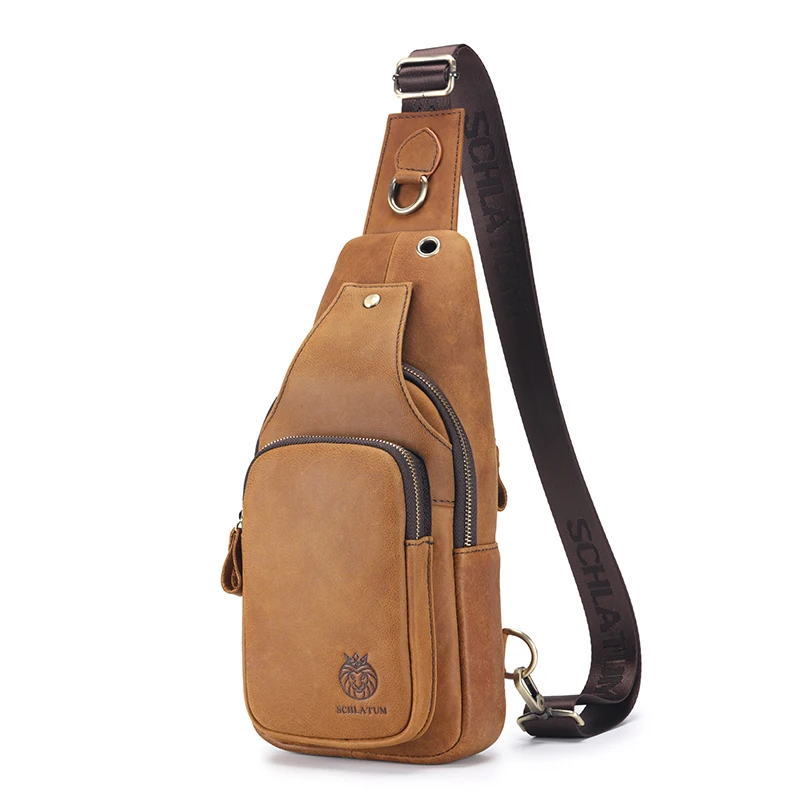
How often should I condition my leather backpack?
Conditioning frequency depends on usage, climate, and leather type. As a general rule, condition every 3-6 months for regularly used backpacks. In dry climates or with frequent use, increase to every 1-3 months. Always condition based on the leather’s appearance and feel rather than a strict schedule—when it begins to look dry or feel stiff, it’s time to condition.
Can I use household products to clean my leather?
While some household products like mild soap can work in emergencies, dedicated leather cleaners are strongly recommended. Avoid household products containing alcohol, ammonia, or harsh detergents, which can strip natural oils and damage leather. Never use furniture polish, window cleaners, or all-purpose cleaners on leather backpacks.
Is it safe to use my leather backpack in the rain?
Brief exposure to light rain is generally safe for well-maintained leather backpacks with proper waterproofing treatment. However, prolonged exposure to heavy rain can cause damage regardless of protection. If your backpack gets wet, blot excess moisture immediately and allow it to dry naturally away from heat sources, then condition once completely dry.
How do I remove pen marks from leather?
Fresh ink stains can sometimes be removed using alcohol-based leather cleaners or specialized ink removers. Test in an inconspicuous area first, then gently dab (never rub) the stain. For ballpoint ink, a small amount of non-acetone nail polish remover on a cotton swab might work, but risks damaging the leather’s finish. Permanent marker or set ink stains often require professional treatment.
Why is my leather backpack developing a patina?
Patina is the natural aging process of leather that creates character and depth of color over time. It results from exposure to sunlight, natural oils from handling, and general use. A developing patina is a sign of quality leather and proper care, not damage. Each backpack develops a unique patina reflecting its individual journey and use patterns.
How do I store my leather backpack long-term?
For storage exceeding one month, clean and condition your backpack thoroughly, stuff it with acid-free tissue to maintain shape, and store in a breathable cotton dust bag. Place in a cool, dry location with moderate humidity away from direct sunlight. Avoid plastic bags or containers, which trap moisture. Every few months, remove from storage to air out and reposition the stuffing to prevent creasing.
Can I restore color to faded leather?
Mild fading can often be improved with leather conditioner, which naturally darkens leather slightly. For more significant fading, leather dyes or color restorers matched to your backpack’s original color can help. Apply in thin layers following product instructions. For valuable backpacks or extensive fading, professional color restoration provides the best results.
The Rewards of Proper Leather Care
Investing time in proper leather care delivers substantial rewards. Well-maintained leather develops a beautiful patina—that coveted character that tells the story of your journeys together. Unlike mass-produced synthetic alternatives, quality leather improves with age when properly maintained.
Beyond aesthetics, proper maintenance ensures your backpack remains functional for years or even decades. Stress points stay strong, hardware continues operating smoothly, and the structure maintains its integrity despite regular use. This longevity represents significant value—quality leather backpacks can serve faithfully for 10-20 years or more with proper care, compared to just 1-3 years for typical synthetic alternatives.
This longevity also reflects an environmentally conscious choice. By maintaining rather than replacing your backpack, you reduce waste and resource consumption associated with manufacturing new products. Quality leather goods represent sustainable consumption when maintained for their full potential lifespan.
The care routines outlined in this guide help preserve your Summit Carry backpack’s premium qualities—the natural beauty, structural integrity, and functional design that distinguish truly exceptional leather goods. Each maintenance session is an investment in your backpack’s future, ensuring it remains a reliable companion for adventures yet to come.



